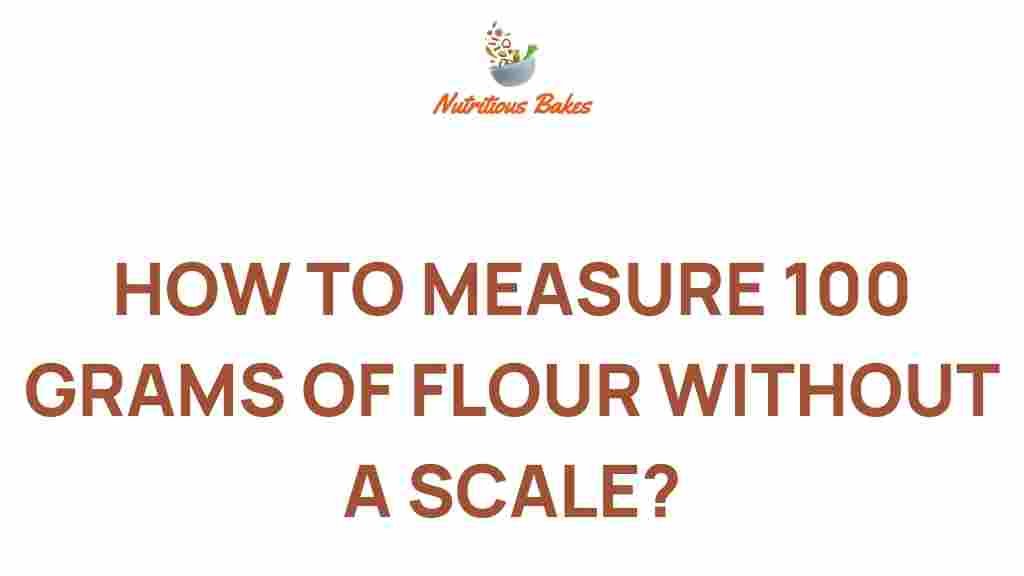Mastering the Art of Measuring Flour: 100 Grams Without a Scale
Measuring flour accurately is a crucial skill in baking and cooking. Whether you are a seasoned chef or a novice in the kitchen, understanding how to measure flour without a scale can enhance your culinary techniques and ensure your recipes turn out perfectly every time. In this article, we will explore various methods to measure 100 grams of flour without a scale, along with essential cooking tips and kitchen hacks that will elevate your home cooking experience.
The Importance of Accurate Flour Measurement
Flour measurement is a fundamental aspect of baking essentials. Accurate measurement can significantly impact the texture and taste of your baked goods. Too much or too little flour can lead to dense bread, flat cakes, or dry cookies. Therefore, mastering the art of measuring flour is essential for any home cook. Here are some reasons why measurement accuracy matters:
- Consistent Results: Accurate flour measurement leads to consistent outcomes in your dishes.
- Texture: The right amount of flour affects the final texture of baked goods.
- Flavor: Proper measurement allows for balanced flavors in your recipes.
Common Measuring Techniques for Flour
There are several methods to measure flour without a scale, each with its own advantages. Here are some of the most effective methods:
1. Using a Standard Measuring Cup
One of the simplest ways to measure flour is by using a standard measuring cup. Here’s how to do it:
- Fluff Up the Flour: Before measuring, use a spoon to fluff up the flour in its container. This prevents it from compacting.
- Spoon and Level: Spoon the flour into your measuring cup without packing it down. Once filled, use a straight edge (like a knife) to level off the top.
Typically, 1 cup of all-purpose flour weighs approximately 120 grams. Therefore, to measure 100 grams, you would use about ⅞ cup of flour.
2. Using a Tablespoon
If you don’t have a measuring cup handy, you can also use tablespoons to measure flour. Here’s how:
- Know the Conversion: There are approximately 8 tablespoons in ½ cup of flour. Therefore, 1 tablespoon of flour weighs about 15 grams.
- Calculate the Amount: To measure 100 grams, you would need about 6 to 7 tablespoons of flour (6 tablespoons = 90 grams; 7 tablespoons = 105 grams).
3. Using a Glass or Mug
You can also use a standard glass or mug to measure flour. Most average-sized mugs hold around 1 cup of flour.
- Estimating: Fill the mug with flour and remember that it roughly translates to 120 grams. Therefore, aim for about ¾ mug to get close to 100 grams.
Step-by-Step Process for Measuring 100 Grams of Flour
Here’s a step-by-step process to measure 100 grams of flour using a measuring cup:
- Gather Your Tools: You will need a measuring cup, a spoon, and a straight edge for leveling.
- Fluff the Flour: Use the spoon to fluff up the flour in its container to avoid compacting.
- Scoop: Spoon the flour into the measuring cup until it is overflowing.
- Level Off: Use the straight edge to level off the flour at the top of the measuring cup.
- Adjust: If you know your cup holds approximately 120 grams, use about ⅞ cup for 100 grams.
Cooking Tips and Kitchen Hacks for Flour Measurement
Here are some additional cooking tips and kitchen hacks to enhance your flour measurement skills:
- Use a Sifter: If your recipe calls for sifted flour, always measure first before sifting.
- Keep It Dry: Ensure your measuring tools are dry to prevent flour from sticking.
- Practice Makes Perfect: The more you practice measuring flour, the more accurate you will become.
Troubleshooting Common Flour Measurement Issues
Even experienced cooks can run into issues when measuring flour. Here are some common problems and solutions:
- Too Much Flour: If your dough or batter is too dry, you may have added too much flour. Always fluff and level for accuracy.
- Too Little Flour: If your baked goods are too wet or spread out, you may need to increase the flour slightly.
- Using the Wrong Type: Make sure you are using the type of flour specified in your recipe for best results.
Conclusion: Mastering Flour Measurement for Delicious Results
Measuring flour accurately is an essential skill for anyone who enjoys baking and home cooking. By utilizing the techniques and tips outlined in this article, you can measure 100 grams of flour without a scale and improve your culinary techniques. Whether you use a measuring cup, tablespoon, or mug, the key is to ensure that your measurement is as accurate as possible. Remember, practice is vital to mastering this skill, so don’t hesitate to experiment and find the method that works best for you.
For more kitchen tips, check out our comprehensive guide on cooking essentials. And for a deeper understanding of flour types and their uses, visit this informative resource.
Start measuring flour with confidence, and watch your baking skills rise to the occasion!
This article is in the category Tips and created by NutritiousBakes Team
